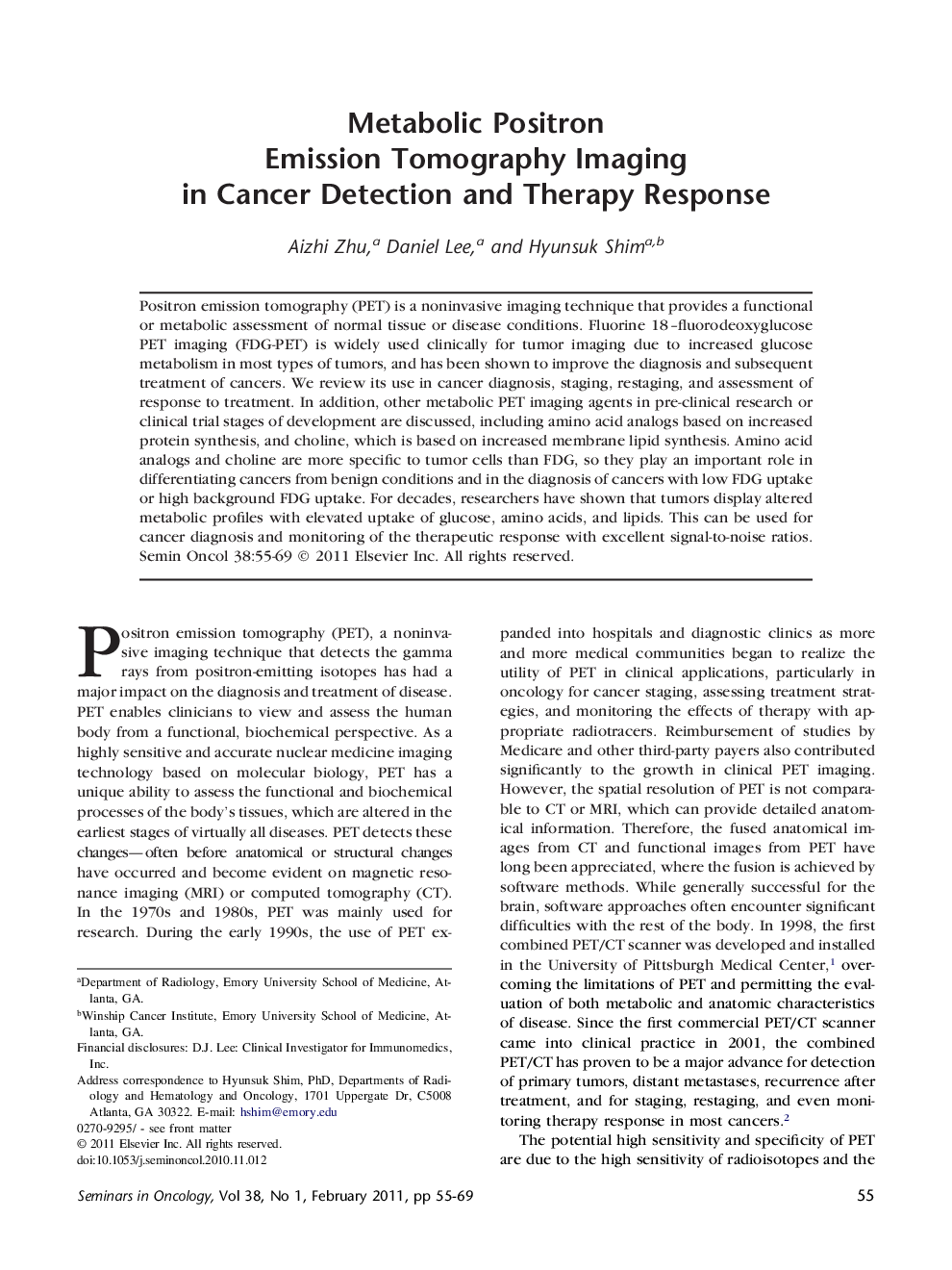| کد مقاله | کد نشریه | سال انتشار | مقاله انگلیسی | نسخه تمام متن |
|---|---|---|---|---|
| 2162445 | 1091251 | 2011 | 15 صفحه PDF | دانلود رایگان |
عنوان انگلیسی مقاله ISI
Metabolic Positron Emission Tomography Imaging in Cancer Detection and Therapy Response
دانلود مقاله + سفارش ترجمه
دانلود مقاله ISI انگلیسی
رایگان برای ایرانیان
موضوعات مرتبط
علوم زیستی و بیوفناوری
بیوشیمی، ژنتیک و زیست شناسی مولکولی
تحقیقات سرطان
پیش نمایش صفحه اول مقاله

چکیده انگلیسی
Positron emission tomography (PET) is a noninvasive imaging technique that provides a functional or metabolic assessment of normal tissue or disease conditions. Fluorine 18-fluorodeoxyglucose PET imaging (FDG-PET) is widely used clinically for tumor imaging due to increased glucose metabolism in most types of tumors, and has been shown to improve the diagnosis and subsequent treatment of cancers. We review its use in cancer diagnosis, staging, restaging, and assessment of response to treatment. In addition, other metabolic PET imaging agents in pre-clinical research or clinical trial stages of development are discussed, including amino acid analogs based on increased protein synthesis, and choline, which is based on increased membrane lipid synthesis. Amino acid analogs and choline are more specific to tumor cells than FDG, so they play an important role in differentiating cancers from benign conditions and in the diagnosis of cancers with low FDG uptake or high background FDG uptake. For decades, researchers have shown that tumors display altered metabolic profiles with elevated uptake of glucose, amino acids, and lipids. This can be used for cancer diagnosis and monitoring of the therapeutic response with excellent signal-to-noise ratios.
ناشر
Database: Elsevier - ScienceDirect (ساینس دایرکت)
Journal: Seminars in Oncology - Volume 38, Issue 1, February 2011, Pages 55-69
Journal: Seminars in Oncology - Volume 38, Issue 1, February 2011, Pages 55-69
نویسندگان
Aizhi Zhu, Daniel Lee, Hyunsuk Shim,